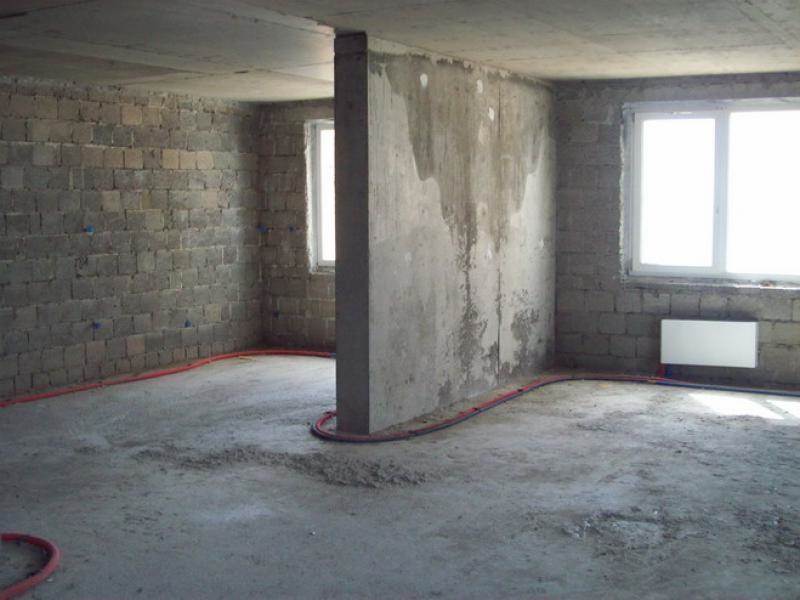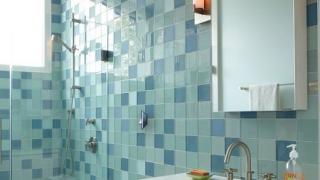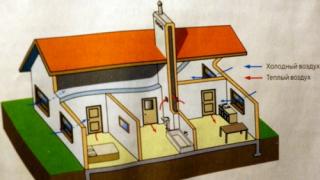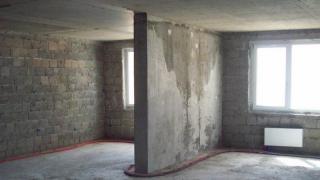It is difficult to independently determine which floor screed is better. If 10 - 20 years ago only cement-sand was used, now many different types of materials and manufacturing methods are known.
Despite this, the most popular options are "wet", "dry" and "semi-dry" methods.
Each of them has significant differences in installation and has its own specific advantages and disadvantages.
What should it be?
 The floor material, or rather the way it is laid, implies compliance with certain requirements for the base during implementation.
The floor material, or rather the way it is laid, implies compliance with certain requirements for the base during implementation.
This applies directly to the surface on which the topcoat will be mounted. In general, when performing a screed, it is important to consider the following points:
- the area must be level and level. Deviations of no more than 0.3 mm per 1 p / m;
- any surface (dry, semi-dry or wet) must be protected with thermal insulation;
- the bottom of the base is protected from moisture with a layer of waterproofing.
 Positive characteristics inherent in each of the known pouring methods:
Positive characteristics inherent in each of the known pouring methods:
- High strength.
- Resistance to atmospheric and climatic influences.
- Improves surface quality.
- Provides good heat, hydro and sound insulation.
Any of the types are good, but you can get the best result by completing the necessary list of works using different technologies and materials.
Wet screed
 For wet screed, crushed stone or gravel filler is used
For wet screed, crushed stone or gravel filler is used
With a complete analysis of the question of which floor screed is better, you can start with the wet pouring method. It is made on cement, therefore there are only 2 options: concrete and cement-sand screed.
The difference between them is that the first method requires a filler with a large structure: crushed stone or gravel. The rest of the details are absolutely identical, but depending on the purpose of the pillow, the proportions of the binder composition may differ.
 If we compare the pros and cons of a concrete and cement-sand base, we can highlight the strength of the first method. Due to this, it is widely used both inside and outside the house for rough and fine screeds. In addition, large-scale capital construction is carried out with its help.
If we compare the pros and cons of a concrete and cement-sand base, we can highlight the strength of the first method. Due to this, it is widely used both inside and outside the house for rough and fine screeds. In addition, large-scale capital construction is carried out with its help.
Its widespread popularity is due to additional features of the composition:
- A wet screed of their concrete is poured and hardens much faster than a cement-sand screed.
- When processing large areas, the total cost comes out much less than dry or semi-dry.
- It is allowed to make a layer of any thickness, which implies the use of concrete to level almost any curvature of surfaces.

 The hardening time of the mixture also depends on the layer thickness.
The hardening time of the mixture also depends on the layer thickness. Analysis of the mortar mixture can reveal several disadvantages inherent in this method. First of all, this is the mandatory reinforcement of the structure. In addition, there are a number of reasons why many people prefer other methods:
- long period of hardening of the mixture, depending on the thickness of the layer;
- significant shrinkage and possible cracking;
- the flooded base must be constantly monitored and periodically moistened;
- time-consuming process of self-production of the mixture;
- sufficient complex alignment of the horizontal direction of the surface.
The completed base is quite heavy, which contradicts the requirements for pouring the screed in apartment buildings, and in private buildings will lead to an additional load on the foundation.
Semi-dry
 The mixture of semi-dry screed is evenly distributed throughout the room
The mixture of semi-dry screed is evenly distributed throughout the room
The percentage composition of the components of a semi-dry screed is similar to those of which a wet screed is made.
However, the mixture differs in the level of moisture content. As the name suggests, the amount of water in this case needs to be added by half.
An example is the composition for the manufacture of a mixture in proportions of 1 to 3, respectively, of cement and sand. This requires only 24 - 26 liters.
 After distributing the material, it is rammed
After distributing the material, it is rammed Semi-dry screed is performed as follows. The composition is evenly distributed over the previously designated area. Laying takes place in several layers, where each is rammed.
Having reached the required level, indicated by beacons, the surplus is removed by the rule. Walking on the surface is allowed after 2-3 hours. At this time, you need to perform the final leveling and smoothing of the base with a metallized brush.
To conclude which floor screed is best for your situation, it is necessary, given some features, of a semi-dry mixture before the wet manufacturing method. First of all, it is possible to distinguish the period during which the compositions harden, which were mentioned a little above. In addition, there are several more distinctive features:




